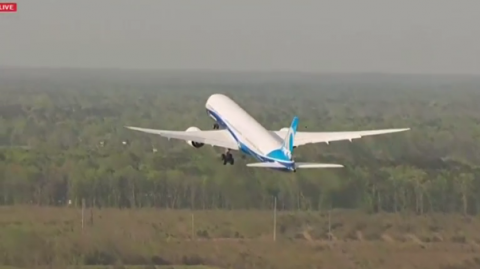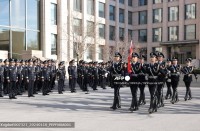
LE BOURGET, France (Reuters) — The idea may seem far-fetched but with self-flying drones available for less than $1,000, the technology of pilotless planes has real possibilities says Mike Sinnett, Boeing’s vice president of product development.
Airlines are among those backing the idea, in part to deal with a projected need for 1.5 million pilots over the next 20 years as global demand for air travel continues to grow.
“I see a need for 41,000 commercial jet airplanes over the next 20 years,” he told Reuters at the start of the Paris Airshow. “That means we’re going to need around 617,000 more pilots. One of the ways that may be solved is by having some type of autonomous behaviour, anything from reducing five pilots on a long haul flight down to three or in some cases going from one to none.”
Jetliners can already take off, cruise and land using their onboard flight computers and the number of pilots on a standard passenger plane has dropped to two from three over the years.
Sinnett, a pilot himself, plans to test the technology in a cockpit simulator this summer.
“We know enough today to start doing testing. You can take it all the way to where you operate an airplane autonomously but with a safety pilot in the right seat just to make sure that nothing goes wrong,” said Sinnett.
Self-flying aircraft would need to meet the safety standards of air travel, which had its safest year in 2016, according to the Aviation Safety Network. They would also need to convince regulators who don’t yet know how to certify such planes.
“There were something like 40,000 deaths on U.S. freeways in 2016 and zero in commercial jet scheduled transportation,” said Sinnett.
Sinnett told Reuters that hybrid-electric planes will appear in the not-too-distant future.
“Airplanes that start to switch their propulsion from jet fuel to more of a hybrid electric approach and perhaps even an all electric approach at some time won’t be in the next five years but it’s something certainly that we’re looking at,” he said.
Sinnett added: “Storage capacity is improving, power density is improving, and so it offers us a new way to approach problems.”
The June 19-25 gathering takes place against the backdrop of surprisingly strong airline traffic driven by economic growth, but a steep drop in the appetite for new planes following robust demand for the latest fuel-efficient models in recent years.







